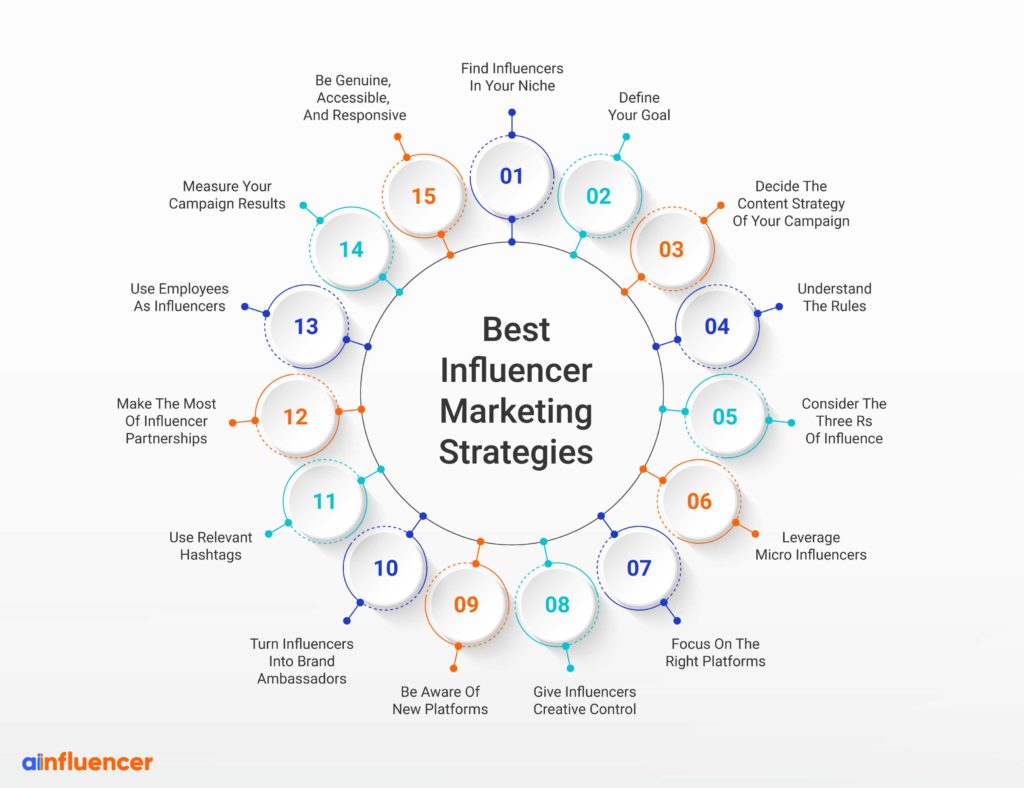In today’s digital landscape, influencer marketing has become an integral part of many brands’ marketing strategies. Leveraging the reach and influence of individuals on social media platforms, influencer marketing enables brands to connect with their target audiences in authentic and engaging ways. However, to maximize the impact of influencer collaborations, brands must adopt strategic approaches that align with their goals and objectives. In this blog post, we’ll explore strategic approaches to influencer marketing and how brands can effectively leverage this powerful tactic to achieve their marketing goals.
Define Your Objectives:
Before diving into influencer marketing campaigns, it’s essential to clearly define your objectives. Are you looking to increase brand awareness, drive website traffic, generate leads, or boost sales? By identifying your goals upfront, you can tailor your influencer marketing strategy to achieve specific outcomes and measure success effectively.
Identify Your Target Audience:
Understanding your target audience is key to selecting the right influencers for your campaigns. Conduct market research to identify the demographics, interests, and preferences of your target audience. Look for influencers whose followers align with your target demographic to ensure that your message resonates with the right audience.
Choose the Right Influencers:
Once you’ve defined your objectives and identified your target audience, it’s time to select the right influencers for your campaigns. Look for influencers who have a genuine connection with their followers, create high-quality content, and align with your brand values and messaging. Consider factors such as audience demographics, engagement rates, and content quality when evaluating potential influencers for collaboration.
Collaborate on Authentic Content:
Authenticity is key to the success of influencer marketing campaigns. Encourage influencers to create content that feels genuine and authentic to their audience while integrating your brand message organically. Avoid overly promotional content that feels forced or inauthentic, as this can turn off audiences and damage the credibility of both the influencer and your brand.
Measure and Analyze Results:
Once your influencer marketing campaigns are live, it’s essential to monitor performance and measure results. Track key metrics such as reach, engagement, website traffic, and conversions to gauge the effectiveness of your campaigns. Use tracking links, promo codes, and UTM parameters to attribute sales and conversions directly to your influencer collaborations. Analyze the data collected to identify trends, insights, and areas for optimization to refine your influencer marketing strategy over time.
Build Long-Term Relationships:
While one-off influencer collaborations can be effective for short-term campaigns, building long-term relationships with influencers can yield greater benefits in the long run. Invest in nurturing relationships with influencers who align with your brand values and consistently deliver results. By building trust and rapport with influencers over time, you can create authentic and sustainable partnerships that drive ongoing success for your brand.
In conclusion Influencer marketing offers brands a powerful way to connect with their target audiences and drive meaningful engagement and conversions. By adopting strategic approaches to influencer marketing, brands can maximize the impact of their campaigns and achieve their marketing objectives effectively. From defining clear objectives and identifying target audiences to selecting the right influencers, collaborating on authentic content, measuring results, and building long-term relationships, strategic planning and execution are key to success in influencer marketing. By integrating influencer marketing into their overall marketing strategy, brands can leverage the reach and influence of influencers to drive brand awareness, engagement, and sales in today’s competitive digital landscape.




